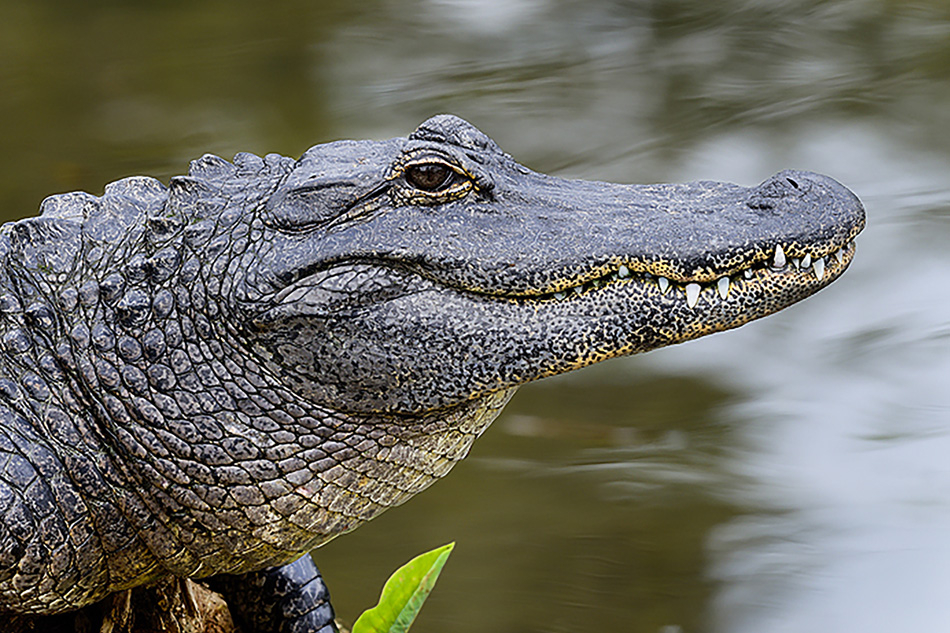In the vast wetlands and swamps of the southeastern United States, a formidable predator lurks beneath the water's surface. The alligator, with its prehistoric appearance and remarkable adaptations, is a captivating creature that has intrigued humans for centuries. From its powerful jaws to its ancient lineage, alligators hold a significant place in both the natural world and human culture.
The secrets that make them one of the most awe-inspiring creatures on Earth:
1. Ancient Survivors: A Living Fossil
Alligators belong to the crocodilian family, which has a lineage dating back over 80 million years. They are often referred to as "living fossils" because their ancestors walked the Earth alongside dinosaurs. This ancient lineage has allowed alligators to thrive in various environments and adapt to changing conditions over millions of years.
2. Physical Adaptations: Power and Precision
One of the most distinctive features of alligators is their powerful jaws. Equipped with numerous sharp teeth, alligators have an incredibly strong bite force, allowing them to capture and subdue prey with ease. Their jaws can exert over 2,900 psi of pressure, making them formidable hunters.
3. Cold-Blooded Strategists
As cold-blooded reptiles, alligators rely on their surroundings to regulate their body temperature. They are often seen basking in the sun to warm up, especially during cooler mornings. This behavior not only helps them stay active but also aids in digestion and overall bodily functions.
4. Master Swimmers
Alligators are graceful swimmers, moving silently and efficiently through the water. They use their powerful tails to propel themselves forward and their webbed feet for steering. In water, they can reach speeds of up to 20 miles per hour, allowing them to swiftly chase down prey or escape from potential threats.
5. Communication
Alligators have unique communication methods, including vocalizations and body language. Their bellowing calls can be heard during mating season, and they use infrasound vibrations to communicate with potential mates through the water. Additionally, alligators display specific body postures to convey their intentions and assert dominance within their social hierarchy.
6. Nurturing Mothers
Contrary to their fierce reputation, female alligators are caring mothers. They build nests made of vegetation and mud near the water's edge and lay eggs inside. Once the eggs hatch, the mother carefully carries her hatchlings in her mouth to the water, protecting them from predators during this vulnerable stage.
7. Environmental Engineers
Alligators play a vital role as "ecosystem engineers" in their habitats. They create small ponds and wetland areas called "gator holes" by digging depressions in the ground. These gator holes serve as essential water sources during dry seasons for other wildlife, including fish, birds, and mammals.
8. Survivors of the Hunt
Due to their impressive adaptations and powerful abilities, alligators have few natural predators. However, they face threats from humans, who hunt them for their skin, meat, and other body parts. Conservation efforts are critical to protect alligator populations and ensure their survival in the wild.
9. A Symbol of Strength and Resilience
Alligators have become emblematic of strength, resilience, and survival in various cultures. In some Native American traditions, alligators symbolize courage and power. They are also significant in the folklore and mythology of indigenous communities in the southeastern United States.
10. Balancing Ecosystems
As apex predators, alligators play a crucial role in maintaining the balance of their ecosystems. By preying on certain species, they help control population numbers, which ultimately benefits the overall health and diversity of their habitats.
Preserving the Alligator Legacy
Given their cultural significance and ecological importance, preserving alligator populations is of utmost importance. Conservation efforts focus on protecting their habitats, mitigating human-wildlife conflicts, and promoting sustainable practices. Through collective action and awareness, humans can ensure that these ancient predators continue to thrive and inspire wonder for generations to come.
